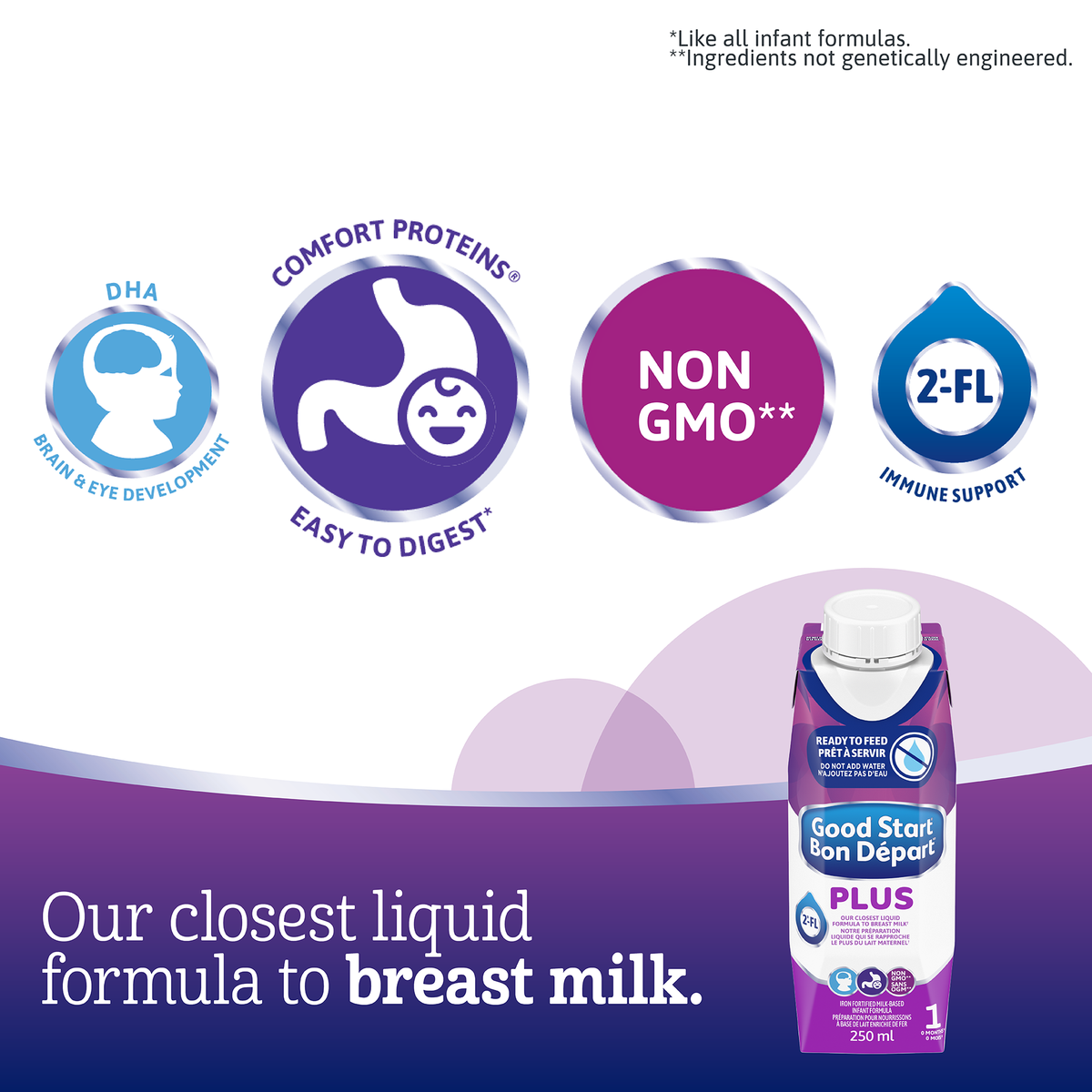
Good Start® PLUS 1 Ready-to-Feed Baby Formula, Tetra Pak
Our closest liquid formula to breast milk with the combination of Comfort Proteins®, DHA, and 2’-FL. Just shake well, open, and pour into a sterilized bottle.
For infants 0 to 12 months
- Our closest liquid formula to breast milk
- Good Start® is pediatricians' #1 choice for easiest formula on baby's tummy!*
- Tummy friendly and easy to digest†, only Good Start® formulas contain Comfort Proteins®, which are 100% whey proteins that are partially broken down for small tummies – and they have been scientifically shown to help promote softer poop§,1
- Expert recommended levels of DHA2, an Omega 3 fat, which contributes to your baby’s normal physical brain and eye development
- With 2’-FL. 2’-FL is an oligosaccharide found in breast milkǁ that is shown to help support digestive health and the developing immune system3-5
- Non-GMOǂ
- No water, no measuring, and no mixing; to prepare, simply shake well, open, and pour into a sterilized bottle
| Average Composition | Per 100 ml |
|---|---|
| Calories | 67 cal |
| Energy | 280 kJ |
| Protein | 1.5 g |
| Fat | 3.4 g |
| Carbohydrate | 7.5 g |
| 2'’-Fucosyllactose | 0.025 g |
| Ash | 0.34 g |
| Linoleic acid | 0.6 g |
| Linolenic acid | 0.056 g |
| Arachidonic acid (ARA) | 11 mg |
| Docosahexaenoic acid (DHA) | 11 mg |
| Vitamin A | 200 IU |
| Vitamin D | 40 IU |
| Vitamin E | 1.3 IU |
| Vitamin K | 0.006 mg |
| Vitamin C | 6.7 mg |
| Thiamine | 0.054 mg |
| Riboflavin | 0.094 mg |
| Vitamin B₆ | 0.05 mg |
| Vitamin B₁₂ | 0.0002 mg |
| Niacin | 0.7 mg |
| Folacin | 0.01 mg |
| Pantothenic Acid | 0.3 mg |
| Biotin | 0.002 mg |
| Choline | 16 mg |
| Taurine | 4.5 mg |
| Inositol | 4 mg |
| L-Carnitine | 0.87 mg |
| Calcium | 44 mg |
| Phosphorus | 24 mg |
| Magnesium | 4.7 mg |
| Iron | 1 mg |
| Zinc | 0.54 mg |
| Manganese | 0.01 mg |
| Selenium | 0.002 mg |
| Copper | 0.054 mg |
| Iodine | 0.008 mg |
| Sodium | 18 mg |
| Potassium | 72 mg |
| Chloride | 44 mg |
| Nucleotides | 2.6 mg |








